CROATIA
Split

Split
Split
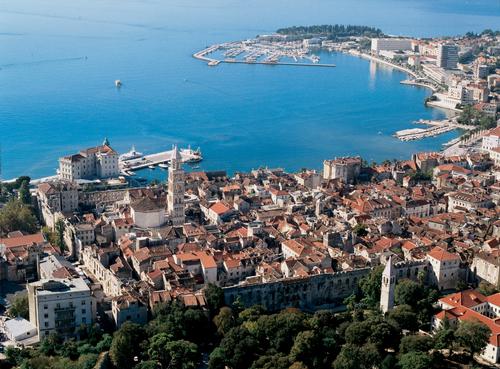 Split PanoramaPhoto: E Coli CC 3.0 Unported no changes made
Split PanoramaPhoto: E Coli CC 3.0 Unported no changes made
Split is an ancient port centered around the huge Roman-era Diocletian's Palace. The city with its many bars, restaurants and souvenir shops is today very focused on tourism. Split is an important stop on an Adriatic Sea cruise vacation. There are a number of interesting islands nearby, which can be reached by ferry. The old town is full of old buildings and palaces. Split has a fantastic harbor area. In recent years, Split has invested a lot of money to present itself again, the Riva boulevard is a good example of this.
| advertisement |
| Hotels Split |
Location
Split is located on the Dalmatian coast, between Dubrovnik (further south) and Zadar (north). The city is the largest city in southern Croatia and one of the main gateways to the country, with an airport and good rail and bus connections and a good-sized port. Close to Split are the tourist islands of Brac and Hvar, which can be easily reached by Ferry from Split.
Weather
Located on the Adriatic Sea, Split has a typically pleasant Mediterranean climate. That means hot, dry summers and warm, humid winters. During the day, summer temperatures hover around 30 ° C, but rarely rise above it, while winter temperatures rarely drop below 10 ° C during the day, except when a northerly wind is blowing. Split is therefore good to visit all year round in terms of climate. For the sun you have to visit the city between May and September. The city is located in one of the sunniest regions in the Mediterranean, but there is also rainfall, especially in late autumn and winter. If you want to avoid crowds, don't go in July and August, during the European school holidays. Spring is a relatively short period and perhaps the best time to visit Split, with moderate temperatures and few crowds.
History
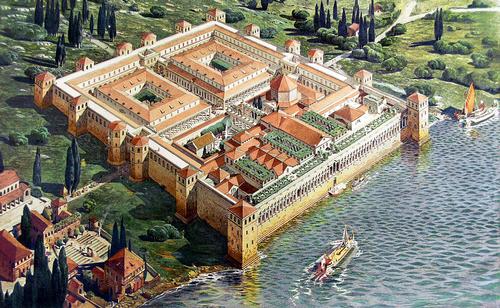 Split Reconstruction Palace of DiocletianusPhoto: Public Domain
Split Reconstruction Palace of DiocletianusPhoto: Public Domain
Split is not only the largest and most important city on the Dalmatian coast. It is also one of the oldest towns in the region. Split's history is linked to many foreign influences from the Greeks to Romans, Byzantines, Venetians and much more.
Many historians say that Split's history begins when the Roman Emperor Diocletian built his palace here just after the turn of the 4th century AD. In reality, a Greek colony called Aspalathos already existed here in the early 3rd century BC. After this, the Illyrians came to power. The Romans subdued the local Illyrians in AD 220 and gained permanent control of the area and the province of Dalmatia. The city was populated by as many as 10,000 people. When the Western Roman Empire fell in 476, Spalatum (as Split was known in Roman times) was incorporated into the Byzantine Empire.
When Byzantine power declined during the Middle Ages in Europe, Split became the plaything of a war between regional powers. Successively, the Kingdom of Croatia, the Venetian Republic and the Austro-Hungarian Empire wanted to control the coveted city and the surrounding area.
With the arrival of the Croatian people in the 7th century AD, this part of the Dalmatian coast changed enormously. As the Kingdom of Croatia steadily gained power and size, it founded its own cities such as Sibenik and they gain control of most of the hinterland. Split takes on a distinct Croatian character. This is evident today in the architecture of the city, especially the churches.
When the Croatian state weakened, the Venetian Republic took control of Split. Venice did this several times from the 10th century onwards and became increasingly influential through its strong economic strength. Ultimately, the Venetians ruled Dalmatia for four centuries from 1420 onwards.
The Austro-Hungarian Empire was the next ruler of Split. After World War I, the city joined the Kingdom of Serbs, Croats and Slovenes (better known today as Yugoslavia). Split grew into the most prominent port city. In 1941, Nazi Germany attacked Yugoslavia and gave Split to Italy. The local population strongly revolted against Italian rule and the city became a focal point of the anti-fascist movement in Yugoslavia. After the Second World War, the city was incorporated into the Socialist Republic of Croatia and enjoyed a solid period of economic growth. When Croatia gained independence in 1991, Split became a strong tourist destination.
Sights
Split has a wealth of monuments, sights and attractions, with an impressive history that goes back a long way, especially around the historic district of Varos.
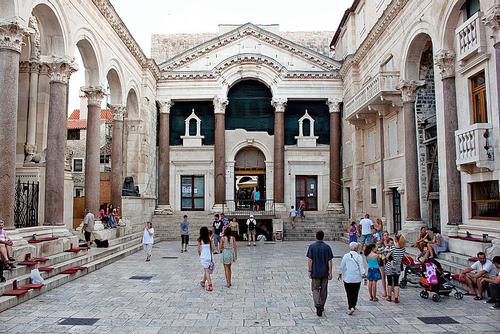 Split Palece of DiocletianusPhoto: Ballota CC 3.0 Unported no changes made
Split Palece of DiocletianusPhoto: Ballota CC 3.0 Unported no changes made
Diocletian's Palace has World Heritage status with its churches, cathedrals, temples and old houses. It houses more than 200 buildings and is visited by thousands of people every day. Highlights can be found in the basement of the palace and along the main streets of Decumanus and Cardo. The most famous sights are the Cathedral of St. Domnius, the Papalian Palace, Peristil Square, the Temple of Jupiter and the Protiron, which is the entrance to the colonial quarters. Diocletian's Palace is open daily and is freely accessible.
The Temple of Jupiter is also located in the grounds of Diocletian's Palace. Dating back to the 5th century, this important and ancient landmark was once supported by a series of huge columns, only one of which remains. There is a carved headless black granite sphinx guarding the entrance. The Sphinx was brought over from Egypt. Above the temple walls is a grand, well-maintained vaulted ceiling and ornate friezes.
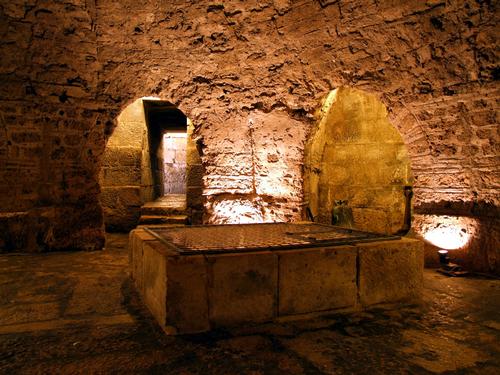 Split Cathedraal St DomniusPhoto:Pudelek CC 3.0 Unported no changes made
Split Cathedraal St DomniusPhoto:Pudelek CC 3.0 Unported no changes made
The Cathedral of St. Domnius is located in the center of Diocletian's Palace. Known for its reconstructed Romanesque bell tower, which dates back to the 12th century. The cathedral began life as an octagonal mausoleum, with many of its original features well-preserved. The cathedral can be reached via a steep climb, but the view from here is fantastic. Main highlights include the domed interior and Corinthian columns. The 13th-century wooden doors depicting the life of Christ and the mosaics in the vestibule were rebuilt in 1908.
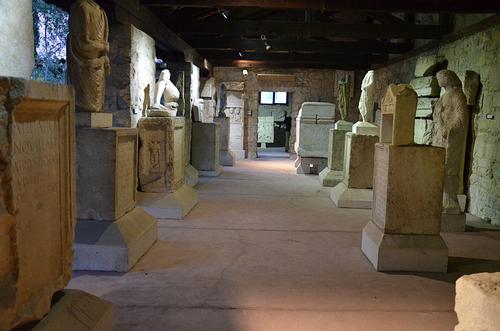 Archeological Museum in SplitPhoto: Carole Raddato CC 2.0 Generic no changes made
Archeological Museum in SplitPhoto: Carole Raddato CC 2.0 Generic no changes made
The Archaeological Museum in Split is quite special. The museum was founded by the Dalmatian government in 1820 and is therefore the oldest museum in Croatia. The current building was built in 1914, but did not open until 1922 as a result of the First World War. Located on the northern side of the city center, the Arheoloski Muzej displays Roman and early Christian finds of both the city and its surroundings, including some interesting remains excavated in Narona and Solin (Salona). With a large exhibition space, a covered atrium and a pleasant garden, there is plenty to see. The statues and reliefs are particularly impressive, while a range of jewelery, coins and ceramics are also on display.
Tips
When Split gets a bit too busy, go to one of the beautiful islands just off the coast. The two most famous islands are Brac and Hvar.
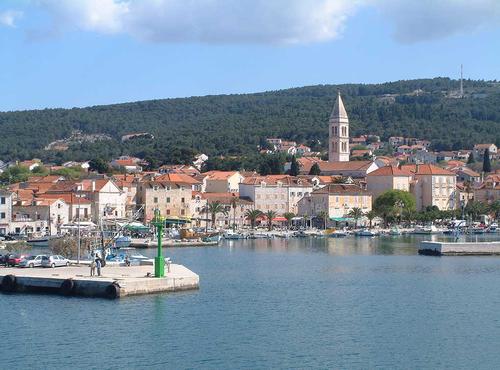 Supetar on the island BracPhoto: K. Korlevic in the public domain
Supetar on the island BracPhoto: K. Korlevic in the public domain
Brac is the most visited island near Split. It has almost divine beaches and is easily accessible by ferries. The island is also easy to do with a water scooter. The crossing to Brac takes about an hour. Supetar is an important town on the island of Brac and has a number of interesting sights, such as the 18th century Church of the Annunciation and the Mausoleum of the Petrinovic family. Between June and September, the Supetar Cultural Festival is a major highlight. The town of Bol is known for the pebble beaches of Borak, Potocine and Zlatni Rat, here you can enjoy the best windsurfing and kite surfing in all of Croatia.
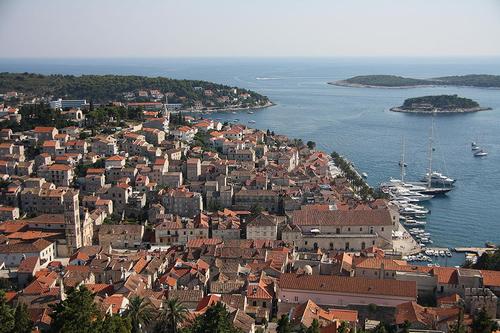 Hvar CroatiaPhoto: Schorle CC 3.0 Unported no changes made
Hvar CroatiaPhoto: Schorle CC 3.0 Unported no changes made
Hvar is a bit further from the coast than Brac and is therefore less touristy. The luxurious beaches here are even more attractive than on the island of Brac and certainly than those on the mainland. This is the sunniest place in Croatia and due to the beautiful weather and beaches, Hvar has become extremely popular with tourists and day trippers from Split. Hvar town is the center of the island and is well worth spending time in. Many yachts moor in the pleasant harbor. At the height of summer, more than 30,000 people visit this city every day. They visit the main square - the Trg Svetog Stjepana, as well as the 17th century Arsenal, Saint Stjepan Cathedral, Benedictine Monastery and the Archaeological Museum. There are several ferries a day between the ports of Split and Hvar. The neighboring Pakleni Islands are only a short distance from Hvar. They have excellent swimming possibilities and can be reached in less than 30 minutes via taxi boats.
Useful links Split
BBC Country ProfilesWorld Fact Book Explore all Countries
How to call
Last updated May 2025
Copyright: Team - The World of Info